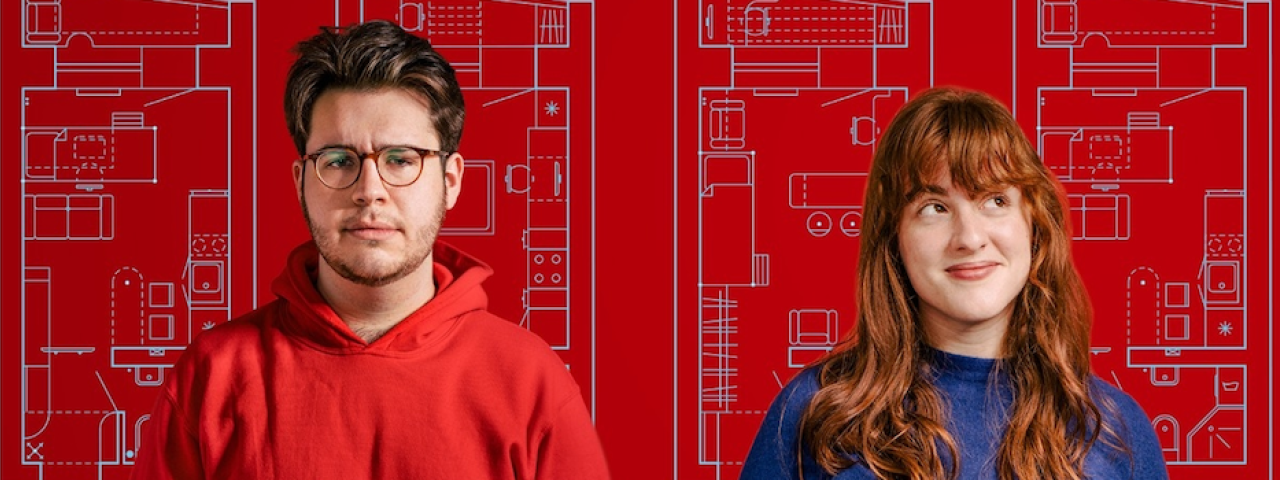
China is one of the most rapidly growing nations in the world, and Shanghai is at the vanguard of its development. As Dylan Crow and Isabella Baranyk, both Interactive Media Arts (IMA) majors at NYU Shanghai, got to know the city, they became interested in the communities of migrant workers who were responsible for building the skyline that was rising around them.
More specifically, Dylan and Isabella, who are both design-minded, noticed that these workers lived in temporary, dormitory-style housing and wondered about their living conditions. Here, they discuss their summer, funded by an NYU Dean’s Undergraduate Research Fund grant, of conducting collaborative research and getting to know these communities.
 Dylan Crow, 2018, and Isabella Baranyk, 2018
Dylan Crow, 2018, and Isabella Baranyk, 2018
Interactive Media Arts
NYU: Why were you drawn to researching migrant worker housing?
Isabella: These communities are a prominent part of the urban landscape in Shanghai, but people don’t pay attention to them. The housing that’s provided for them while they work on massive construction projects are dormitories made out of shipping container–like material. Often, they have no privacy, no access to kitchens, and sometimes workers have to use public restrooms.
Dylan: They dissolve into the background of the urban fabric that you live in, but we wanted to pay attention to these physical structures and the types of communities that live in them.
Isabella: There’s a newer movement in architecture—which we both study—that prioritizes democratic design and collaboration with the people you are designing for. One interesting result of that is that more attention is paid to housing for refugees. This type of housing has to be modular—quick to put up, quick to take down, and easy to ship from place to place. Housing for migrant laborers has a lot of these same characteristics, but it’s not getting that same attention.
Dylan: The main goals of our project are to draw attention to the reality of the way these communities live and to create an educational package for industry leaders so they can better serve these communities.
NYU: How did you conduct your research?
Dylan: Every morning we would walk around migrant housing communities, take notes, and then talk about our observations. There was a breakfast cart near one community that was run by a couple who had well-developed relationships with a lot of the migrant community members. I got to know the couple, any they helped introduce us to the migrant workers.
Isabella: We tried to tread lightly, always being mindful of people’s boundaries and privacy. Although these spaces look like construction sites or parking lots, they are people’s homes.
Dylan: For a week, I spent every morning at the breakfast cart chatting with the owners, and through them I slowly met more of the migrant workers. I developed a good enough relationship with the woman who ran the cart that she even put me to work—I’d help collect customers’ money when the cart started to get busy. It takes a bit of time to develop trust, but we’ve been consistently amazed by how open and welcoming people have been.
Do you each bring different skills to the table?
Isabella: Dylan is a strong creative partner—he can create virtual reality landscape and film with drones. But what I admire most about him is his ability to create long-lasting bonds with a lot of the people we spoke with.
Dylan: This project was Isabella’s idea, and she did all of the initial research. She also interned for ArchDaily, an online architecture magazine, while studying abroad at NYU Abu Dhabi, so her knowledge of the field and ability to write about it is highly developed.
NYU: Did you run into any obstacles during your research?
Dylan: Our original plan was to take on some of the design challenges that we uncovered and propose our own housing model.
Isabella: But we encountered too many different policy and design issues to tackle, so we decided to use our other skill sets to present our research to people who have the resources to take on these issues.
Dylan: Pivoting our focus like that required help. Matthew Belanger and other IMA faculty, along with our faculty advisers, Christian Grewell, who is based at NYU Shanghai, and Carl Skelton, who is based at NYU in New York City (Isabella connected with him while studying abroad there), helped us reframe our research questions, redirect our project, and access the equipment and software that brought it all together.
Isabella: Now we’re working on a website to host the information that we’ve gathered and analyzed. There will be a 3-D model of one of the housing communities that you’ll be able to virtually experience. We’re also working to present our research findings in a visually appealing way that will attract a large audience from within the design community. We hope that designers and architects will take our findings and use them to create better communities for migrant workers all over the world.
--------------------
Read more:
Shanghai—a New Hub for Urban Studies

